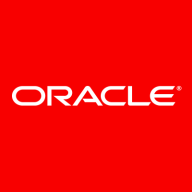

SAP HANA and Oracle Database In-Memory both operate in the highly competitive field of real-time data processing and analytics. SAP HANA holds an edge in real-time business operations within SAP environments due to its speed and integration, whereas Oracle shows strength in analytic workloads with advanced security features.
Features: SAP HANA excels in real-time data processing with in-memory technology that enables fast data retrieval, making it ideal for real-time analytics and transactions. It is praised for its speed, stability, and extensive integration capabilities. Oracle Database In-Memory offers robust performance for data warehouses and analytic workloads, particularly when paired with Exadata, thanks to its columnar format that enhances analytic query speeds. Users highlight the solution's advanced security features and its capability for real-time analytics.
Room for Improvement: SAP HANA could enhance its integration capabilities and user interface to better compete with Oracle. Users note difficulty with customization and mention the high costs associated. Oracle Database In-Memory would benefit from improved integration with modern AI technologies and a reduction in complexity for easier management. Users also suggest that Oracle should optimize its pricing to increase accessibility.
Ease of Deployment and Customer Service: SAP HANA offers on-premises and hybrid cloud deployment, though it is often noted for its complexity and cost. Technical support experiences vary, with reports of slow response times. Oracle Database In-Memory provides similar deployment options and is generally praised for its robust security and performance, but like SAP, its ecosystem's complexity and cost present challenges for smaller businesses.
Pricing and ROI: SAP HANA is perceived as expensive, with costs justified by its integration benefits and performance, especially for large enterprises. Licensing varies, and significant hardware costs for on-premises use are noted. Oracle Database In-Memory is also costly, yet users recognize its strong ROI through superior data processing capabilities. However, the price and additional feature costs can deter smaller enterprises. Careful consideration of licensing and operational costs is required for both to ensure cost-effectiveness.
We do not feel we're getting value for the investment due to the additional resources needed for integration and maintenance.
SAP HANA is a cost-saving solution that helps save money and serves as a time-saving solution that helps save time.
Support quality varies across regions, with more advanced solutions from the U.S. and UK compared to Asian region support.
I rate the technical support of Oracle an eight or nine out of ten.
The community support is better than the official SAP support.
While issues are resolved eventually, the first level of support is not as good as we would like.
When we raise a ticket for AWS or Azure issues, we find their support is very proactive, while SAP's support is quite passive.
Our operations have grown from a hundred data operations a day to as many in a couple of seconds.
There is enough scalability offered by SAP to meet our deployment needs.
The scalability rating is based on the ability to expand.
It was very difficult to move data from on-site to cloud in one attempt at the start, because we didn't have sufficient bandwidth to copy the data files to the cloud.
We recently faced customer data loss during the cluster handover or failover fallback.
We have not had any problems in the last seven to eight years.
Regarding stability, they are using legacy systems and have implemented SAP HANA.
Enhancing features like CAG augmentation and cache augmentation could significantly optimize performance for large language models.
The main issue is the ecosystem, which lacks the widespread support that SQL enjoys.
The setup process and deployment process for SAP HANA is complex.
Licensing costs with SAP HANA are very high.
Recent reductions in cloud costs and learning opportunities, such as free portals for students, make the pricing reasonable without hindering access to powerful features and performance.
The pricing for Oracle Database In-Memory is more affordable.
It's a recurring subscription model, which is expensive compared to legacy systems with just a maintenance fee.
SAP is not a cheap company, and its licenses are expensive.
I would rate the price for SAP HANA as high.
The valuable features of Oracle Database In-Memory include its capability to bypass disk storage for faster memory operations, which is critical for transactions and analytics.
This architecture allows for faster data processing and real-time analytics that were not possible with traditional databases.
The concept enhances speed, allowing the database to serve and move data quickly.
One of our dashboards using Excelsius was previously developed on normal BW on Oracle data, which took 10 minutes to open. After developing the same calculation views using those tables and replacing them with calculation views in Excelsius, the dashboard opened in seconds.
| Product | Market Share (%) |
|---|---|
| SAP HANA | 8.8% |
| Oracle Database In-Memory | 9.6% |
| Other | 81.6% |


| Company Size | Count |
|---|---|
| Small Business | 6 |
| Midsize Enterprise | 4 |
| Large Enterprise | 22 |
| Company Size | Count |
|---|---|
| Small Business | 26 |
| Midsize Enterprise | 11 |
| Large Enterprise | 61 |
Oracle Database In-Memory transparently accelerates analytics by orders of magnitude while simultaneously speeding up mixed-workload OLTP. With Oracle Database In-Memory, users get immediate answers to business questions that previously took hours.
Oracle Database In-Memory delivers leading-edge in-memory performance without the need to restrict functionality, or accept compromises, complexity and risk. Deploying Oracle Database In-Memory with any existing Oracle Database compatible application is as easy as flipping a switch - no application changes are required. Oracle Database In-Memory is fully integrated with the Oracle Database’s renowned scale-up, scale-out, storage tiering, availability, and security technologies making it the most industrialstrength offering on the market.
The ability to easily perform real-time data analysis together with real-time transaction processing on all existing applications enables organizations to transform into Real-Time Enterprises that quickly make data-driven decisions, respond instantly to customer demands, and continuously optimize all key processes.
For more information on Oracle Database In-Memory, visit Oracle.com
SAP HANA, also known as SAP High-performance Analytics Appliance, is a multi-model database that stores data in its memory, allowing users to avoid disk storage. The product combines its robust database with services for creating applications. SAP HANA is faster than other database management systems (DBMS) because it stores data in column-based tables in main memory and brings online analytical processing (OLAP) and online transaction processing (OLTP) together.
The column-oriented in-memory database design allows users to run high-speed transactions alongside advanced analytics, all in a single system. This provides companies with the ability to process very large amounts of data with low latency and query data in an instant. By combining multiple data management capabilities, the solution simplifies IT, helps businesses with innovations, and facilitates digital transformation.
The solution is structured into five groups of capabilities, categorized as:
There are three more SAP products that work alongside SAP HANA and complete the experience for users together. SAP S/4HANA Cloud is a ready-to-run cloud enterprise resource planning (ERP). SAP BW/4HANA is a packaged data warehouse, based on SAP HANA, which allows users to consolidate data across the enterprise to get a consistent view of their data. Finally, SAP Cloud is a single database as a service (DBaaS) foundation for modern applications and analytics across all enterprise data. All three products can combine with SAP HANA to deliver to users an optimized experience regarding their data.
SAP HANA Features
Each architectural group of capabilities of SAP HANA has various features that users can benefit from. These include:
SAP HANA Benefits
SAP HANA provides many benefits for its users. These include:
Reviews from Real Users
According to a database consultant at a pharma/biotech company, SAP HANA is a very robust solution with good data access.
Bruno V., owner at LAVORO AUTOM INF E COM LTDA, likes SAP HANA because the product offers advanced features, helps reduce hours, and makes it easy to find what you need.
We monitor all Embedded Database reviews to prevent fraudulent reviews and keep review quality high. We do not post reviews by company employees or direct competitors. We validate each review for authenticity via cross-reference with LinkedIn, and personal follow-up with the reviewer when necessary.